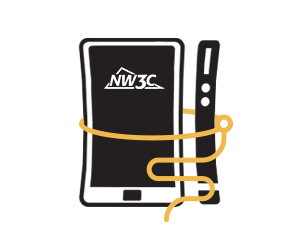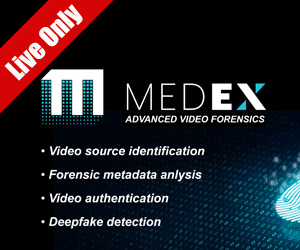
Undercover chat investigations are used to help intercept child predators from victimizing children in our communities. In this webinar, we will provide an overview of the chat techniques used in child exploitation cases. We will cover different apps that were used and how they assisted in identifying the targets and discuss some of the interview techniques that helped lead to confessions.
*This webinar is not a replacement for the ICAC UC Chat Investigations Course.
» Read more

Cybercriminals in clearnet and darknet spaces often use tools like encrypted communication platforms in the commission of cybercrimes. This webinar introduces participants to various encrypted communication platforms and their use by online threat actors. Participants will gain technical knowledge of encrypted communication platforms and gain practical knowledge on how to conduct investigations that involve these platforms.
Presented by:
Shweta Jain, Professor, John Jay College of Criminal Justice
Colton Robinson,
» Read more

Building upon the previous cryptocurrency webinar, “Bitcoin 101: What Are Cryptocurrency and Blockchain All About?” presented by Cobwebs, this webinar will introduce investigative techniques to show how open-source information can be leveraged to attribute identities to wallets and addresses. This webinar will also briefly demonstrate the OSINT and cryptocurrency analysis capabilities of Cobwebs.
Presented by:
Stephen Lerner, Senior Web Intelligence Analyst, Cobwebs Technologies
This webinar is sponsored by Cobwebs Technologies.
» Read more

This webinar will show how parallel investigation techniques commence with a review of tactics and strategies that can be introduced in related fraud enquires. The importance protecting the tradecraft deployed and the use of open and closed source research will be discussed to include comparable techniques used in covert sensitive investigations. Money laundering utilizing virtual, or cryptocurrency will be featured to examine current tradecraft. Additionally, this presentation will include discussion of the impact on not-for-profits as well as a look at mortgage fraud.
» Read more

Is information from mobile extractions, Cloud Source and Google Timeline a solid piece of evidence? In this webinar, we will see how to make your digital evidence become a strong basis for courtroom testimony when validated with phone records, cell coverage, and other sources. Prove your data and set a solid foundation for justice.
Presented by:
Nicola Chermello, CEO and Co-Founder of SecurCube
» Read more

Fraudsters, whether acting alone or as part of an organized, global crime ring, are using every means available to perpetrate and orchestrate large scale schemes against corporations and governments. Open source intelligence (OSINT) can be used to identify assets and information to piece together the traditionally opaque network of people involved in fraud schemes. OSINT sources such as leaked databases, corporate registries, social media, and geolocation are all crucial components in tying together the convoluted web of disparate data points that make up fraud.
» Read more

This webinar will examine the investigative and legal considerations related to tracking technology, and the impact of ultra-wideband location networks such as Apple AirTags and other similar emerging technologies. We will use case analysis to illustrate key questions and considerations for both investigators and prosecutors given the increasing criminal use of this technology and proactive use during investigations.
Presented by:
Justin Fitzsimmons, Associate Vice President, NW3C
Jim Emerson, Vice President, NW3C
» Read more

This training is intended for U.S. Criminal Justice Practitioners. Please register using your agency-issued email.
Registrations will close 24 hours before webinar start time.
With wireless devices being everywhere and easy to conceal, sometimes you have to do a good Ol’ Round-up. Looking at routers can help corral those pesky, missing, or unknown devices. While we look at routers, we will talk about the basic functions and operations to better understand how data is transmitted within the network.
» Read more

With caseloads increasing and data storage sizes exploding, computer forensic examiners are feeling the pressure to clear data and close cases quicker. With the ease of access to pirated material and the lack of legal recourse for such media, many examiners quickly clear the material to ensure there is no illegal material and move on. This can lead to missed evidence. We have discovered a way to conceal a video file within a video as a secondary layer.
» Read more

This webinar is live only and will not be available on-demand.
Video evidence is ubiquitous in modern society, yet investigators may not be taking advantage of all the information available to them in digital video. This webinar will highlight approaches to properly understand video metadata and identify metadata fields often missed by many tools. Attendees will also gain insight into identifying the source device make/model of unknown video files, even those transmitted between devices or through social media.
» Read more















